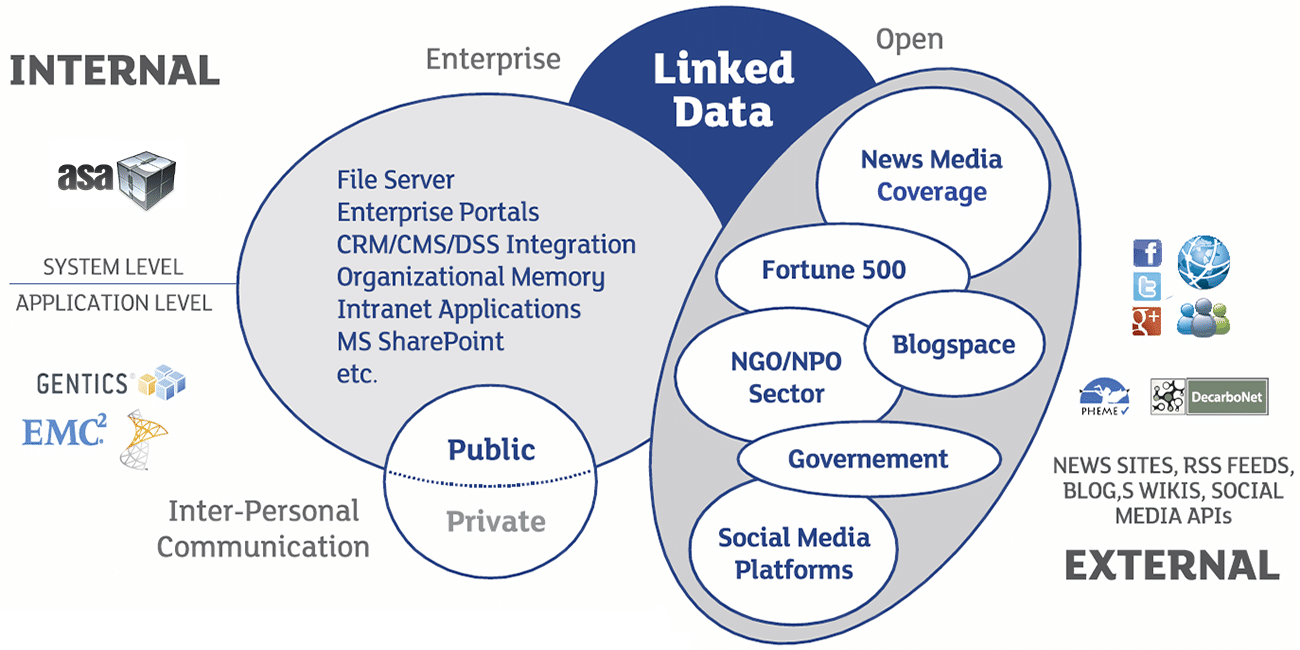Business Intelligence
Corporate networking and storage technologies increase the availability of information resources within and across organizational boundaries. Effective methods to manage these resources are among an organization’s most important assets. Decision support and business intelligence services, for example, require a comprehensive and integrated view on internal and external information spaces.
Within an organization, this includes the system layer (storage and distributed file-level solutions) and the application layer including enterprise portals, collaborative systems, mailing lists, content management and customer relationship management systems, and organizational memory applications. Externally, this includes news and social media content, the Web sites of partners and competitors, the NGO/NPO sector as well as linked data and open government resources.
By targeting the complex interplay between such external and internal information sources, the webLyzard platform provides important insights for decision makers on strategic, tactical and operational levels:
External Information Sources
Brand reputation management, market research and communication success metrics. The guest article of David Herring describes the adoption of the webLyzard platform by the Climate.gov of the US National Oceanic and Atmospheric Administration (NOAA). Core elements of this platform include advanced success metrics such as WYSDOM and a portfolio of visualization techniques like the Brand Reputation Radar to measure stakeholders perceptions and evaluate the success of online campaigns.
Internal Information Sources
Knowledge management and organizational memory applications. webLyzard couples its award-winning dashboard and semantic search capabilities with flexible data acquisition techniques that tap into a variety of corporate knowledge assets – e.g. meeting notes, internal publications or other Intranet resources in standard document formats such as .odf, .docx and .pdf. The WebDAV-based knowledge store first introduced with the 2014-12 release “Gila Monster” helps manage such assets, complemented by an e-mail gateway to capture the content of mailing lists and message boards, and collaboration with partner organizations to integrate the resources contained in enterprise portals and corporate content management systems.
Throughput is essential for applications that process streams of digital content from external and internal sources. The scalable analytics platform of the ASAP Project explores the success factors of such “big data” applications, which include (i) the ability to handle very large repositories of volatile data, and (ii) the intelligent management and analysis of such repositories to unearth hidden knowledge and provide effective decision support.




